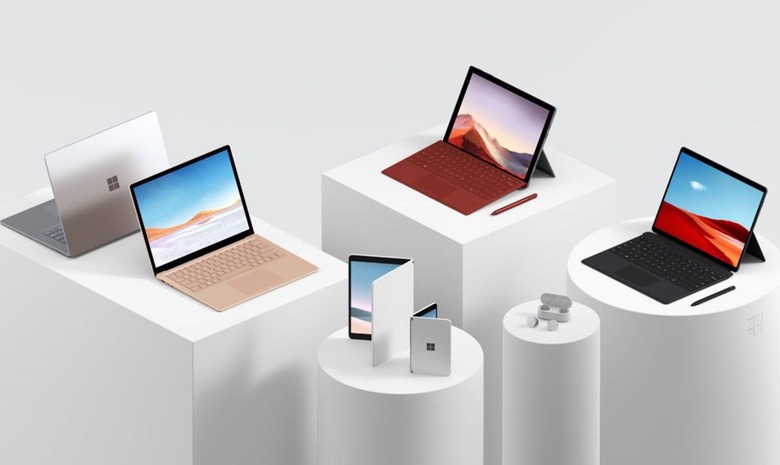Windows 10X will come to single-screen laptops first
Microsoft will launch Windows 10X on single-screen devices first, it's been confirmed today, flipping the script on the special version of the OS that had initially been promised for dual-screen Windows devices. Panos Panay, Chief Product Officer for Windows and Devices at Microsoft, confirmed the change in strategy, suggesting that the computing landscape has changed dramatically since the first roadmap was shared in October of last year.
Back then, Windows 10X was announced alongside the new Surface Neo, a completely different form-factor of device for Microsoft's Surface family. Two touchscreens – capable of being used either side-by-side much like a book, or rotated 90-degrees and emulating a traditional notebook – the Surface Neo relied on new finger- and stylus-friendly enhancements in Windows 10X.
Gone, for example, is the Start Menu, at least in the form we know it today. Windows 10X replaces that with a phone-like interface of apps, blended with important and pinned documents. Gone, too, are Live Tiles.
Windows 10X also focused on controlling what was visible on each screen, and how windows could be shifted from panel to panel, or spread across the whole of a dual-display notebook. App support was designed to be ubiquitous from the outset, with Windows 10X on Neo supporting Office and anything else built on the same Windows software core.
Since then, though, there've been signs of a roadmap shake-up. Rumors last month indicated that the Surface Neo could be delayed until 2021, and Windows 10X with it. Now, though, Panay hints that one of the two could come sooner than that.
"The world is a very different place than it was last October when we shared our vision for a new category of dual-screen Windows devices," Panay writes. "As we continue to put customers' needs at the forefront, we need to focus on meeting customers where they are now. Our customers are leveraging the power of the cloud more than ever, and we believe the time is right to lean into this acceleration in a different way."

Just as Windows 10X was designed from the get-go with flexibility in screen layouts as its focus, that also means it can be made to work on single-display devices too. "These single-screen devices will be the first expression of Windows 10X that we deliver to our customers," Panay says, "and we will continue to look for the right moment, in conjunction with our OEM partners, to bring dual-screen devices to market."
It's a disappointing decision, in a way, because it's undeniable that part of the appeal of Windows 10X was the unusual form-factors of devices that it would unlock. All the same, the current COVID-19 pandemic probably isn't the best time to launch esoteric and undoubtedly expensive tablets, 2-in-1s, and foldables. This decision could bring Windows 10X to market in more affordable ways – though Panay stops short of revealing the actual launch date – and thus pave the way for that more interesting hardware come 2021.
